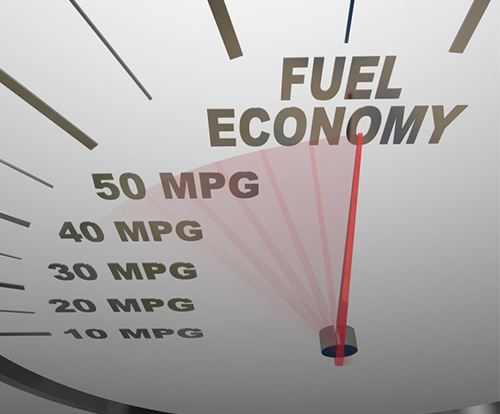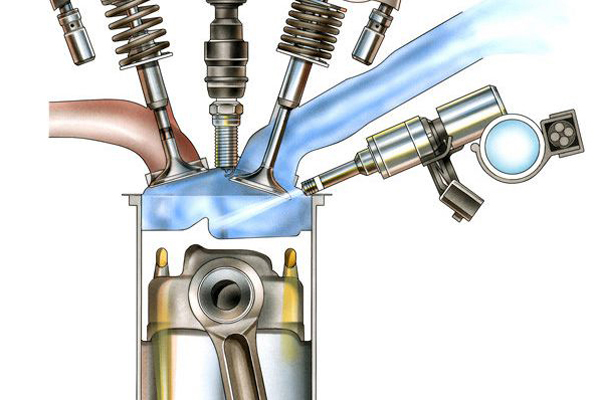GDI engines: what are they, and why is everything automotive becoming alphabet soup? Well GDI stands for Gas Direct Injection. Okay, problem solved, now we all know what the initials stand for, BUT what does this mean to me, “Joe Average somewhat new car owner”?
 Somewhere in this crazy industry, the government has decided how many miles the average fleet of every manufacturer must achieve. This historical or should I say a hysterical piece of legislature is called CAFE, or Corporate Average Fuel Economy for short. To make a long story short, for the year 2012 the CAFE for passenger vehicles was 36 mpg, fast forward to 2021 and the rating is at 45mpg, looking to the future the government is looking for a 54.5 mpg corporate average. You might say to yourself “wow, this is phenomenal” 54.5 miles to the gallon is great. In a perfect world it would be, but alas the world is not perfect.
Somewhere in this crazy industry, the government has decided how many miles the average fleet of every manufacturer must achieve. This historical or should I say a hysterical piece of legislature is called CAFE, or Corporate Average Fuel Economy for short. To make a long story short, for the year 2012 the CAFE for passenger vehicles was 36 mpg, fast forward to 2021 and the rating is at 45mpg, looking to the future the government is looking for a 54.5 mpg corporate average. You might say to yourself “wow, this is phenomenal” 54.5 miles to the gallon is great. In a perfect world it would be, but alas the world is not perfect.
The GDI engine was/is the industry’s last milestone to achieving these standards, and on paper, the test results are very real.
First, you must understand how this new injection system works, and the new rules that you as consumers must follow. Way back in the old days when engines were carbureted, fuel was just dumped down into the intake manifold where it was just atomized with incoming air and somehow found its way into the combustion chambers. It wasn’t completely haphazard the runners were designed and tuned to be as efficient as that day’s science and engineering thought good enough. Average fuel economy: 12-15 mpg. Then came the 70’s the great gas shortage and being held hostage by Middle Eastern Oil Cartels. Cars got lighter, engines smaller and the most asked question was “how many miles to the gallon”. Carbureted engines became antiques and the new buzz was fuel injection. Enter the EPA, CAFÉ, CARB, and a bevy of other agencies known only by initials. The race for cleaner air, fuel economy, performance through electronics and alternative fuels were on.
 Fuel injection went through its own development process and as the need for more efficiency increased, the design and management of fuel delivery and distribution changed. Early fuel injection pressures began at 9 psi which was close to double that of carbureted engines. These pressures quickly increased to 30, 45, 54, and then 65psi to better atomize the air-fuel mixture so that the perfect stoichiometric ratio of air to fuel which is 14.7:1 could be manipulated to as high as 60:1 and still have smooth running and good performance engines that sip fuel instead of drinking it.
Fuel injection went through its own development process and as the need for more efficiency increased, the design and management of fuel delivery and distribution changed. Early fuel injection pressures began at 9 psi which was close to double that of carbureted engines. These pressures quickly increased to 30, 45, 54, and then 65psi to better atomize the air-fuel mixture so that the perfect stoichiometric ratio of air to fuel which is 14.7:1 could be manipulated to as high as 60:1 and still have smooth running and good performance engines that sip fuel instead of drinking it.
Enter GDI, a super-high pressure and perfectly aimed injection stream to the top of the piston to perform complete and efficient combustion. By super high pressure, we are talking about a two-fuel pump system, one in the tank to deliver the fuel to the top of the engine which by today’s standards is normal in the 50-60 psi range. The second fuel pump is usually located in the fuel rail and driven by the camshaft to generate these super high pressures. By super high we are talking from 600-2900 psi of pressure to completely atomize the fuel with air. Then by injecting the fuel directly to the top of the piston, diminishing the need for throttle plates and other restrictions, thus making the efficiency of the burn rely more on the strict engine management systems which monitor the precise need for fuel, and duration of the injection process so that ultra-lean mixtures can be utilized thus increasing power and limiting the fuel consumption aspects of combustion.
But with these new developments comes a whole new set of rules concerning the care and maintenance of these systems which the public was not made aware of. And while those of you that are fortunate enough to replace your vehicles every 4 or 5 years, the second and third owners of these poorly maintained engines will become prey to expensive and major repairs to keep these vehicles running right.
Our next story will outline the maintenance procedures that are necessary to keep these vehicles running well.